
Roots
To journey into the historical role of natural butters within Black hair rituals is to unearth a profound lineage, a story etched not merely in scientific compounds but in the very fiber of collective memory, cultural continuity, and deep resilience. Consider, if you will, the intimate moment of care passed down through generations—a mother’s hands working balm into her child’s scalp, a practice steeped in ancestral wisdom. This act, seemingly simple, transcends a mere cosmetic application; it forms a powerful conduit to heritage, a living testament to ingenuity and self-preservation in the face of immense historical challenge. We do not just look at botanical extracts; we witness the enduring spirit of textured hair, sustained and honored by those who understood its unique language long before modern science offered its explanations.
Natural butters, particularly those sourced from the bountiful landscapes of Africa, served as foundational elements in the intricate world of Black hair care for millennia. Their presence in daily routines speaks to an understanding of moisture retention and hair integrity that predates contemporary product lines. These butters provided nourishment and protection, safeguarding strands from environmental elements and assisting in the creation of styles that carried profound social, spiritual, and artistic significance. The deliberate application of these substances was a sacred component of self-expression and community bond.

Hair’s Elemental Being
Textured hair, in its myriad coils, curls, and kinks, possesses a distinct anatomical structure that makes it uniquely susceptible to moisture loss. Its elliptical cross-section and the many twists along its length mean that natural sebum, produced by the scalp, struggles to travel down the hair shaft effectively. This characteristic leads to inherent dryness, a reality understood by early practitioners who sought solutions from their natural surroundings. The very nature of this hair type, often described as highly porous, meant that a protective barrier was paramount.
Before the imposition of external beauty standards, hair in African societies was a canvas of identity and communication. Styles often conveyed a person’s age, tribal affiliation, social status, marital standing, and even religious beliefs. Hair was a living archive, and its care was a ceremonial act.
Into this context stepped the natural butters, the gifts of the land, providing the very lubrication and sealing properties necessary to maintain these complex and symbolic coiffures. The butters became extensions of the earth’s generosity, offering a tangible link between the physical body and the nurturing environment.

Butters and Their Root Structures
Among the most celebrated of these natural butters is Shea Butter, extracted from the nuts of the shea tree, Vitellaria paradoxa, which thrives across the Sahelian belt of West Africa. Its use reportedly stretches back as far as 3,500 BC, with evidence suggesting its storage in large clay jars in ancient Egypt, even by figures like Cleopatra for skin and hair care. This “women’s gold,” a name earned not just for its hue but for the economic opportunities it has long provided to women in shea-producing regions, served as a primary emollient. Its rich fatty acid composition, alongside vitamins A and E, offered deep moisture, protected hair from harsh sun and winds, and aided in style creation.
Another significant player was Cocoa Butter, sourced from cocoa beans. While often associated with culinary uses, this vegetable fat held a place in African beauty rituals, providing moisturizing goodness due to its fatty acid content. Its properties made it suitable for nourishing hair, adding sheen, and aiding in deep conditioning.
Kalahari melon seed oil, though an oil, is often found in butter formulations. This golden liquid extracted from the seeds of the wild Kalahari melon, native to Southern Africa, was traditionally used to protect skin from the sun and aid hair growth. Its lightweight yet moisturizing qualities made it a valued ingredient, working to strengthen and enhance hair’s luster. The ingenuity in utilizing these diverse indigenous resources speaks volumes about the ancestral knowledge of botanical properties.
Natural butters formed a protective shield for textured hair, essential for its unique structure and integral to ancient styling practices.
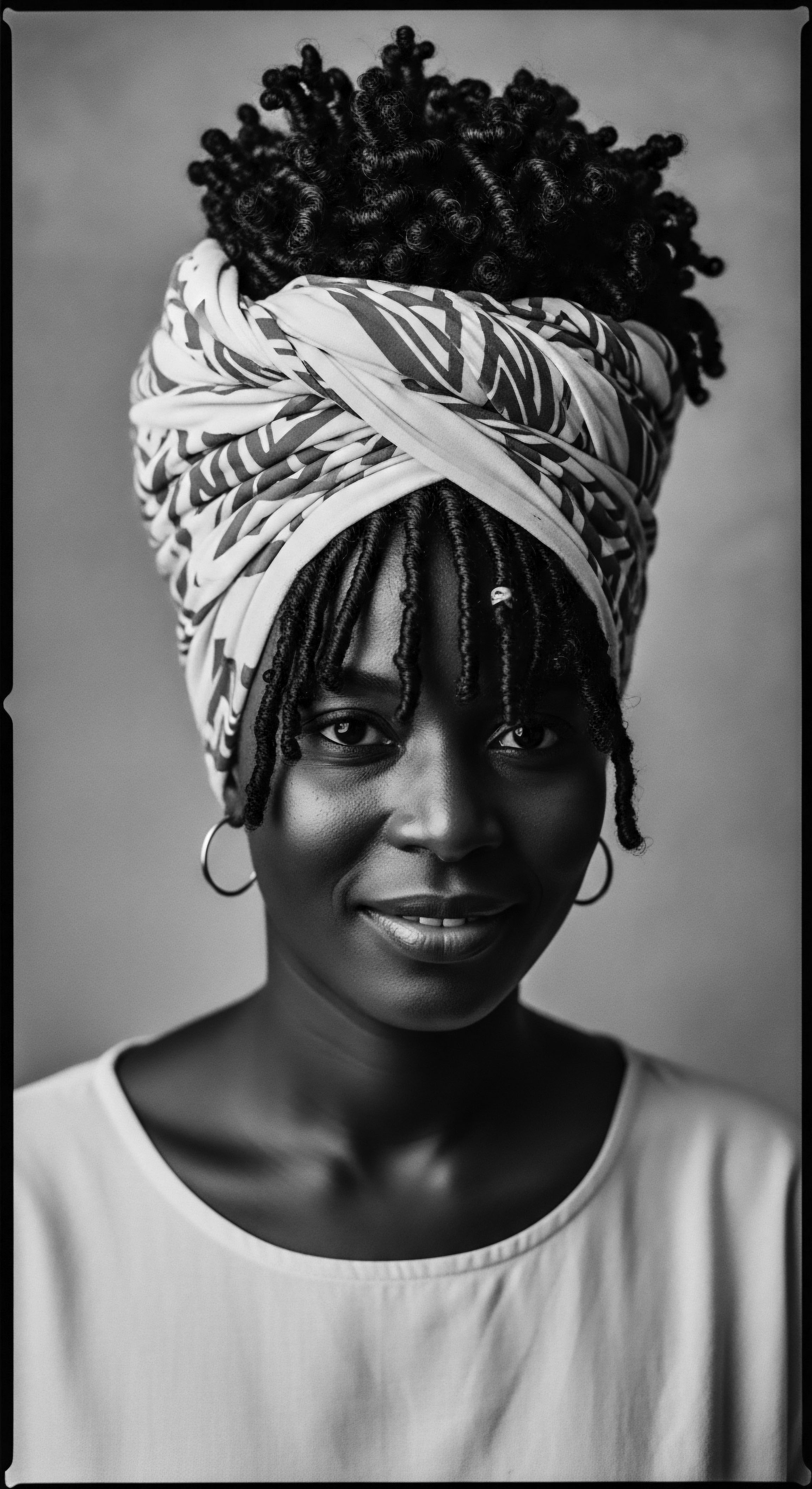
Understanding Hair’s Growth Story
The lifecycle of hair—its anagen, catagen, and telogen phases—is a universal biological truth. However, the manifestation of this cycle, particularly in terms of length retention and breakage, is profoundly influenced by external care. For textured hair, prone to dryness and tangling, practices that minimized friction and maximized moisture were crucial for maintaining length. Natural butters played a critical part in this.
They coated the hair shaft, reducing snagging during manipulation and providing a pliable medium for protective styles like braids and twists. This physical barrier reduced environmental damage and helped hair remain in its growth phase longer, allowing for greater accumulation of length. The cultural imperative of long, strong hair, a symbol of health and vitality, was directly supported by the consistent application of these earth-given balms.
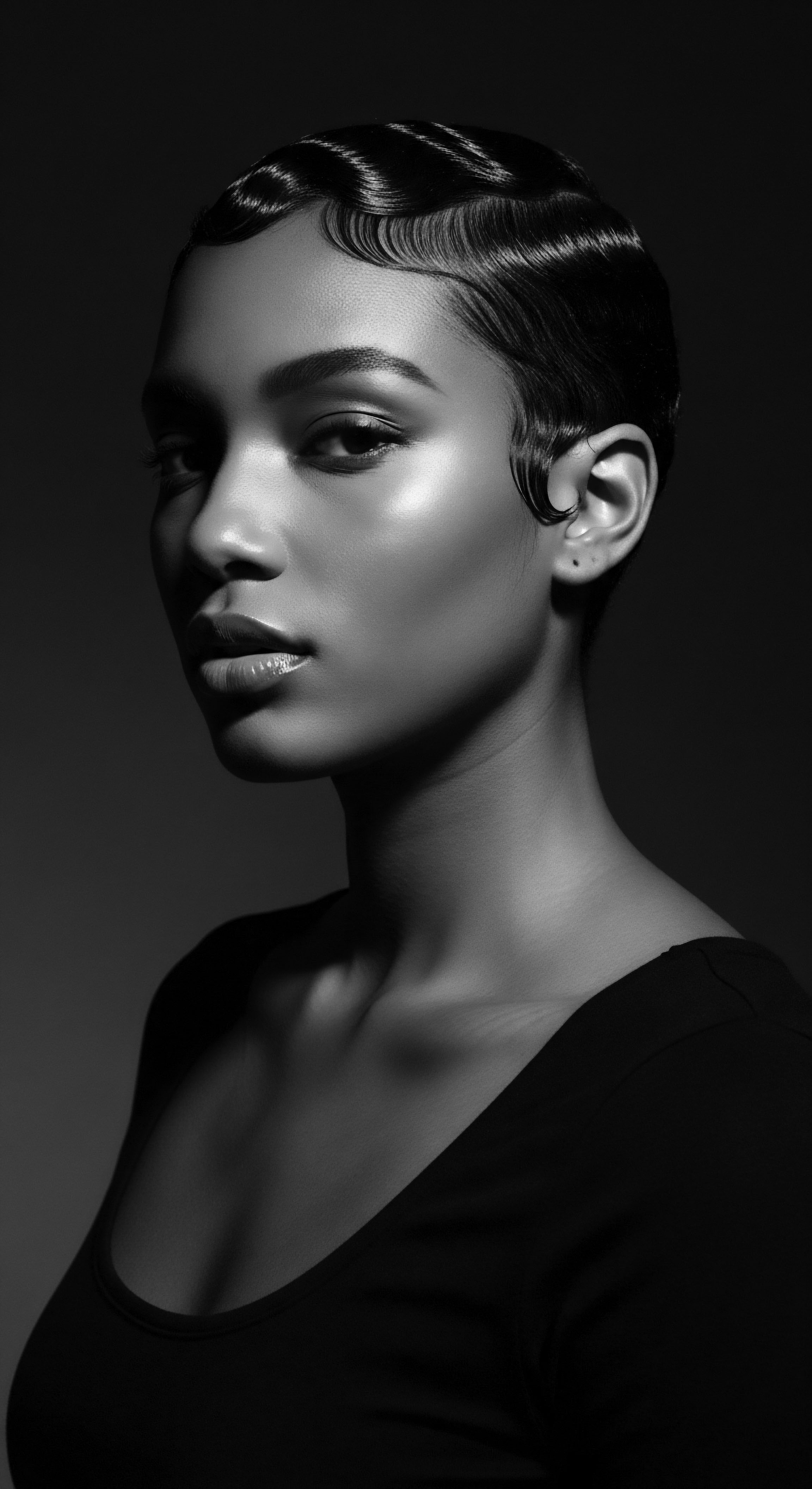
Ritual
The application of natural butters extended beyond mere functional use; it permeated the very fabric of communal life and artistic expression, shaping the heritage of Black hair styling. These substances were not just ingredients; they were silent partners in the dance of hands, a rhythmic tradition of care that spoke volumes without a single word. From the intricate cornrows of West Africa to the elaborate coiled styles, butters provided the necessary slip and hold, allowing for complex patterns to take form and endure. This was hair as architecture, hair as living sculpture, its very existence sustained by these natural emollients.
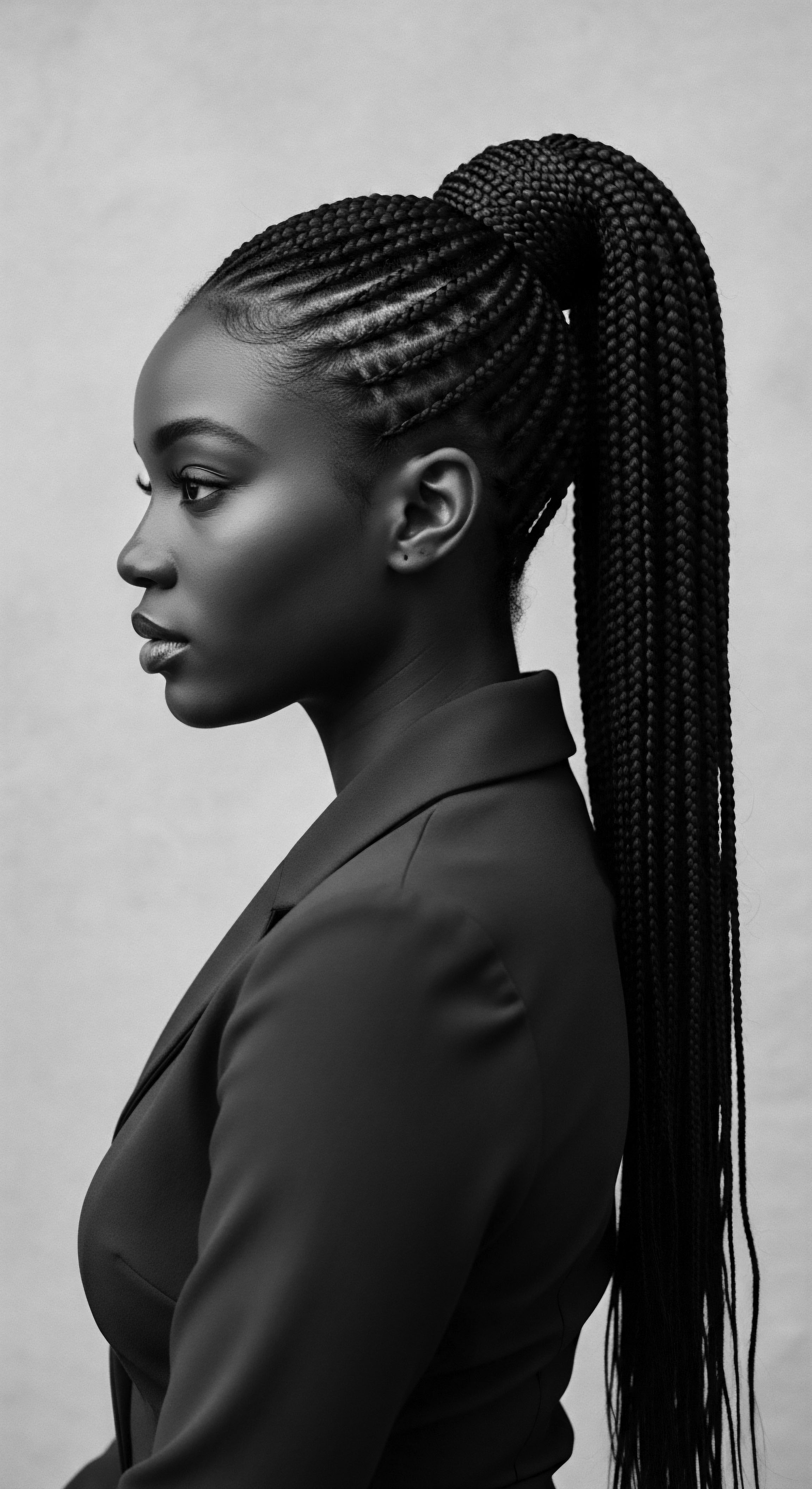
Protective Styling’s Ancient Roots?
Protective styles, a cornerstone of textured hair care, have an ancient lineage deeply embedded in African traditions. Before any modern term for it existed, communities employed braiding, threading, and coiling techniques to safeguard hair from the elements, minimize breakage, and promote length retention. Natural butters were indispensable in these processes.
When preparing hair for long-term styles, shea or cocoa butter would be worked through sections, softening the strands, adding weight, and creating a smooth surface that allowed for tighter, less damaging braids and twists. This preparation was not simply practical; it was a ritual of preservation, ensuring the longevity of both the style and the hair itself.
- Shea Butter ❉ Provided significant slip and moisture for intricate braiding patterns, protecting strands.
- Cocoa Butter ❉ Used for adding sheen and density, particularly in regions where cacao was abundant.
- Animal Fats/Ghee ❉ In certain nomadic communities, butter from fermented milk, akin to ghee, was used for detangling, softness, and anti-frizz properties.
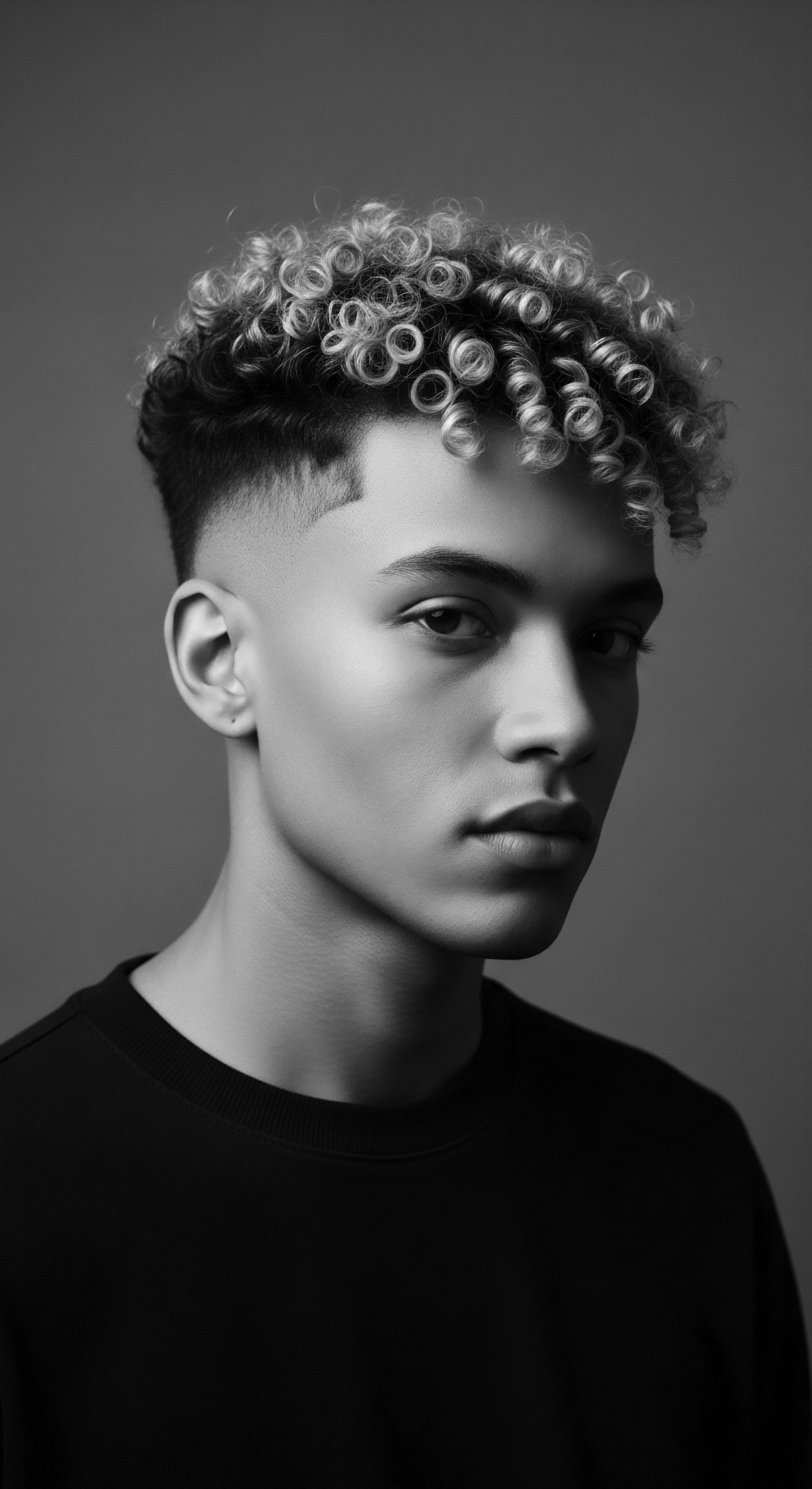
Defining Styles with Natural Balm?
Beyond protective styles, butters were critical in defining and accentuating the natural curl patterns of textured hair. The inherent dryness of coils often leads to frizz, obscuring the beauty of the hair’s natural form. A judicious application of butter, massaged into damp hair, would help clump curls together, enhancing their definition and imparting a healthy sheen. This practice speaks to a profound understanding of hair’s needs, centuries before the advent of modern styling gels or creams.
It was about working with the hair’s intrinsic qualities, rather than against them, a philosophy that echoes into contemporary natural hair movements. The women of the Himba tribe in Southwestern Namibia, for instance, traditionally mix ground ochre, goat hair, and butter to create their distinctive dreadlocks, a striking example of ancient practices defining powerful visual statements. This particular method highlights a unique cultural adaptation, where readily available materials are combined to create both a protective style and a powerful marker of identity.
The daily or ceremonial use of butters transformed hair care into a living art, linking ancestral knowledge with present-day practices.
These methods were transmitted from mother to daughter, an intergenerational transfer of beauty secrets and practical wisdom. The time spent on hair care was also a communal activity, fostering bonds and sharing narratives, making the ritual as much about human connection as it was about hair adornment.
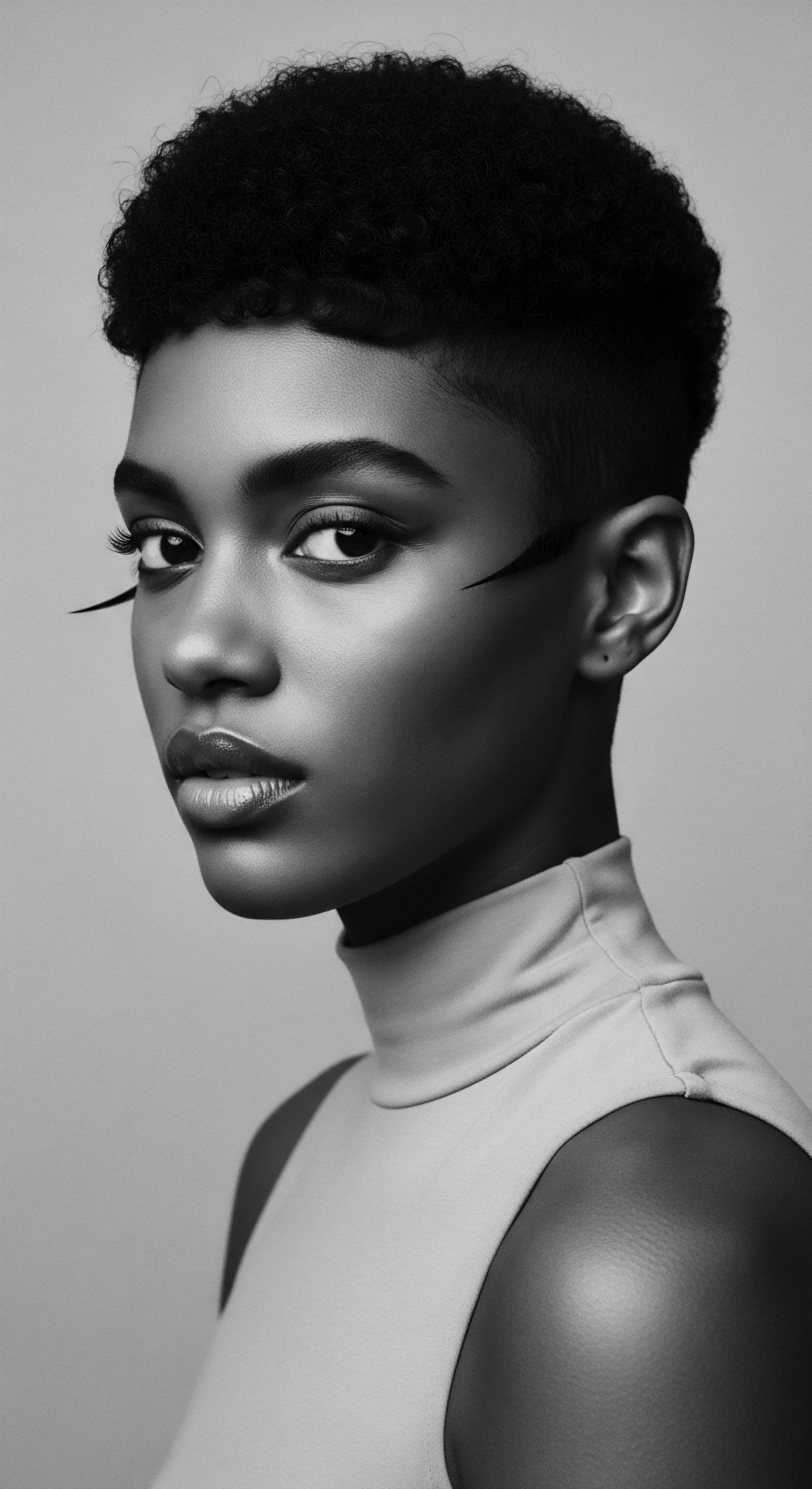
Historical Tools and Traditional Products
The tools accompanying these rituals were often simple, yet profoundly effective. Hands were perhaps the most important, serving as the primary instruments for applying butters, detangling, and crafting intricate styles. Combs, often crafted from wood or bone, were used with care to distribute the rich emollients. The synergy between these simple tools and the natural butters created a system of care that allowed for the flourishing of diverse hair expressions.
| Natural Butter Shea Butter |
| Traditional Use in Hair Rituals Moisturizing, softening, protective barrier against sun and wind, aiding braiding and styling. |
| Modern Scientific Relevance Rich in fatty acids (oleic, stearic), vitamins A and E; forms occlusive layer, reducing trans-epidermal water loss. |
| Natural Butter Cocoa Butter |
| Traditional Use in Hair Rituals Nourishing, adding sheen, promoting elasticity for hair and scalp. |
| Modern Scientific Relevance Contains antioxidants and fatty acids (stearic, palmitic, oleic); known for emollient and conditioning properties. |
| Natural Butter Baobab Seed Butter/Oil |
| Traditional Use in Hair Rituals Moisturizing, repairing damaged hair, soothing dry scalp, anti-inflammatory effects. |
| Modern Scientific Relevance High in Omega-3 fatty acids, vitamins A, D, E, F; provides hydration and supports skin barrier function. |
| Natural Butter These butters represent an enduring heritage of natural hair care, validated by both time and contemporary understanding. |
The journey of butters through history highlights a continuity of care. Even as enslaved Africans were stripped of their traditional tools and methods, they adapted, sometimes using available animal fats like bacon grease or butter to care for their hair, a poignant testament to the persistence of ancestral practices and self-care amidst immense hardship. This adaptation speaks to an inherent need to maintain connection to self and lineage through hair.
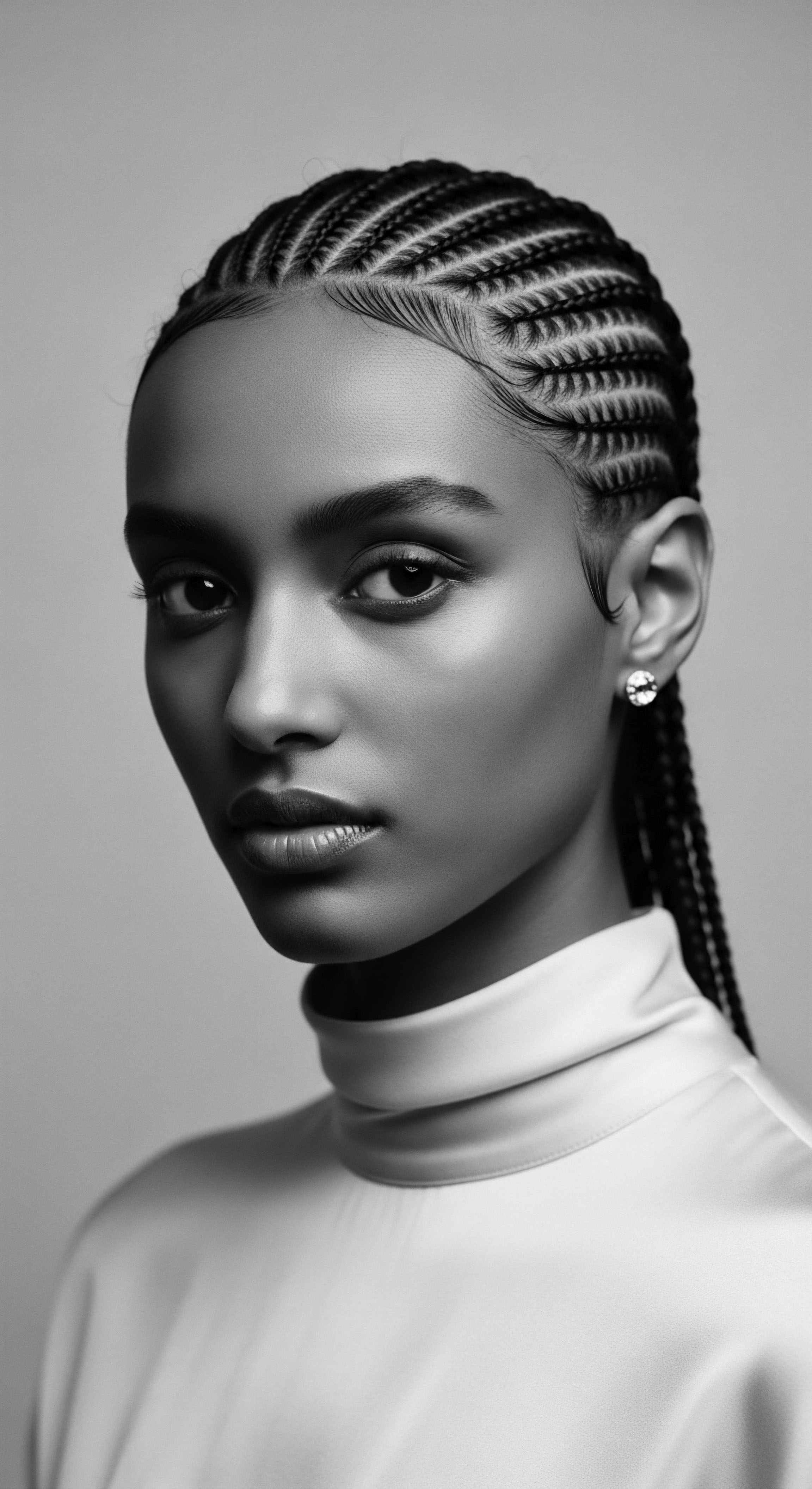
Relay
The legacy of natural butters in Black hair rituals flows forward, a profound stream that enriches contemporary understanding and practice. This is not merely a historical footnote; it constitutes a vibrant, living archive, shaping the very way we approach textured hair today. The wisdom embedded in ancestral care practices, often dismissed by colonial narratives, now finds validation in scientific inquiry, revealing a powerful intersection of tradition, biology, and enduring cultural spirit. The butters stand as symbols of resilience and deep knowledge.

Holistic Wellness and Hair’s Link to Inner Balance?
The application of natural butters historically formed part of a holistic approach to wellbeing, an understanding that hair health was intrinsically linked to overall vitality and inner balance. Ancestral wellness philosophies often viewed the body as an interconnected system, where care for one part influenced the whole. The rituals involving butters were not solely about physical appearance; they were acts of mindfulness, community building, and connection to the spiritual realm.
For instance, the meditative act of massaging butter into the scalp can promote blood circulation, a physical benefit now understood by modern science, but then perceived as encouraging vitality and grounding. This integrated perspective, where external care mirrors internal harmony, is a profound inheritance.
The practice of massaging butters into the scalp served a dual purpose ❉ to moisturize the scalp itself, preventing dryness and flaking, and to stimulate the hair follicles. Many traditional butters possess anti-inflammatory and antimicrobial properties, which would have contributed to a healthier scalp environment, reducing irritation and promoting growth. This ancient preventative medicine for the scalp laid a foundation for thriving hair, a direct contrast to later periods where harsh chemicals caused scalp damage and hair breakage.

Nighttime Sanctuaries and Bonnet Wisdom?
The protection of textured hair during sleep is a practice with deep historical roots, and natural butters played a supporting role in this essential nightly ritual. While bonnets and head coverings are perhaps the most visible aspect of nighttime hair preservation, the preparatory steps involving butters were equally important. A generous application of shea or cocoa butter before covering the hair would seal in moisture, reduce friction against sleep surfaces, and minimize tangling overnight.
This ensured that the hair remained soft, pliable, and less prone to breakage upon waking. The concept of the “nighttime sanctuary” for hair is thus a continuation of ancestral foresight, an understanding that consistent, gentle care extended beyond waking hours.
The significance of butters in maintaining length and health can be understood through a case study of specific African communities. The Basara Arab women of Chad, for example, are renowned for their exceptionally long, thick hair, which often reaches past their waists. Their traditional hair care involves a mixture known as Chebe, a powder containing ingredients like cherry kernels, cloves, and resin, which is often blended with natural oils and butters, including shea butter, to create a nourishing paste. This mixture is applied to the hair lengths weekly, not to promote growth from the scalp, but to prevent breakage and seal in moisture, allowing the hair to retain its accumulated length.
This specific historical example powerfully illuminates the direct link between ancestral practices using natural butters and achieving desired hair outcomes, demonstrating a sophisticated understanding of hair biology adapted to local resources. (A’Lelia Bundles, 2001, On Her Own Ground ❉ The Life and Times of Madam C.J. Walker )
Ancestral knowledge of butters for hair care offers a powerful counter-narrative to imposed beauty standards, emphasizing self-acceptance.
The integration of butters into these daily and nightly regimens underscores a deep, practical knowledge of textured hair’s needs. This empirical understanding, passed down through generations, effectively validated properties that modern science would later confirm ❉ the occlusive nature of butters for moisture retention, their lipid profiles for softening, and their vitamin content for nourishment.
- Ingredient Purity ❉ Ancestral butters were typically raw and unrefined, retaining their full spectrum of vitamins, minerals, and fatty acids.
- Community Connection ❉ The preparation and application of butters often involved communal gatherings, reinforcing social bonds.
- Economic Independence ❉ The trade of butters, like shea, supported women’s economic agency within communities.
The enduring value of these natural butters has led to their prominent inclusion in contemporary hair products, bridging ancient wisdom with modern formulations. Brands increasingly incorporate shea butter, cocoa butter, and baobab oil, recognizing their efficacy in providing moisture, strength, and elasticity to textured hair. This commercial recognition is, in a sense, a global acknowledgement of the enduring power of ancestral botanical knowledge. It is a testament to the foresight of those who first discovered and ritualized the use of these gifts from the earth.

Reflection
Our contemplation of natural butters within Black hair rituals ultimately circles back to the very soul of a strand ❉ a living, breathing archive of identity, tradition, and profound resilience. The story of these rich emollients is far grander than their chemical composition. It is a narrative of continuity, a testament to the wisdom that resided within communities, passed hand-to-hand, heart-to-heart, across continents and through centuries. The butters, humble in their origin, emerged as guardians of a heritage expressed through hair—a heritage that survived displacement, oppression, and relentless attempts at erasure.
This journey into the historical roles of natural butters is a vital part of understanding textured hair heritage. It is a recognition of the ingenuity of ancestors who, with limited resources, cultivated a sophisticated system of care that honored the unique biology of Black and mixed-race hair. It speaks to a deep connection to the land, an intuitive grasp of botanical properties that modern science now confirms. The rhythmic application of shea, cocoa, or Kalahari melon seed oil was not a mere beauty chore; it was an act of affirmation, a quiet declaration of self-worth in a world that often sought to deny it.
Today, as we rediscover and celebrate these ancient practices, we are not simply looking backward. We are, in a profound sense, looking inward—connecting to a lineage that offers strength, beauty, and authenticity. The very act of caring for textured hair with these natural gifts becomes a living ceremony, a continuation of a legacy that reminds us of where we come from, who we are, and the vibrant, unbound helix of our future.
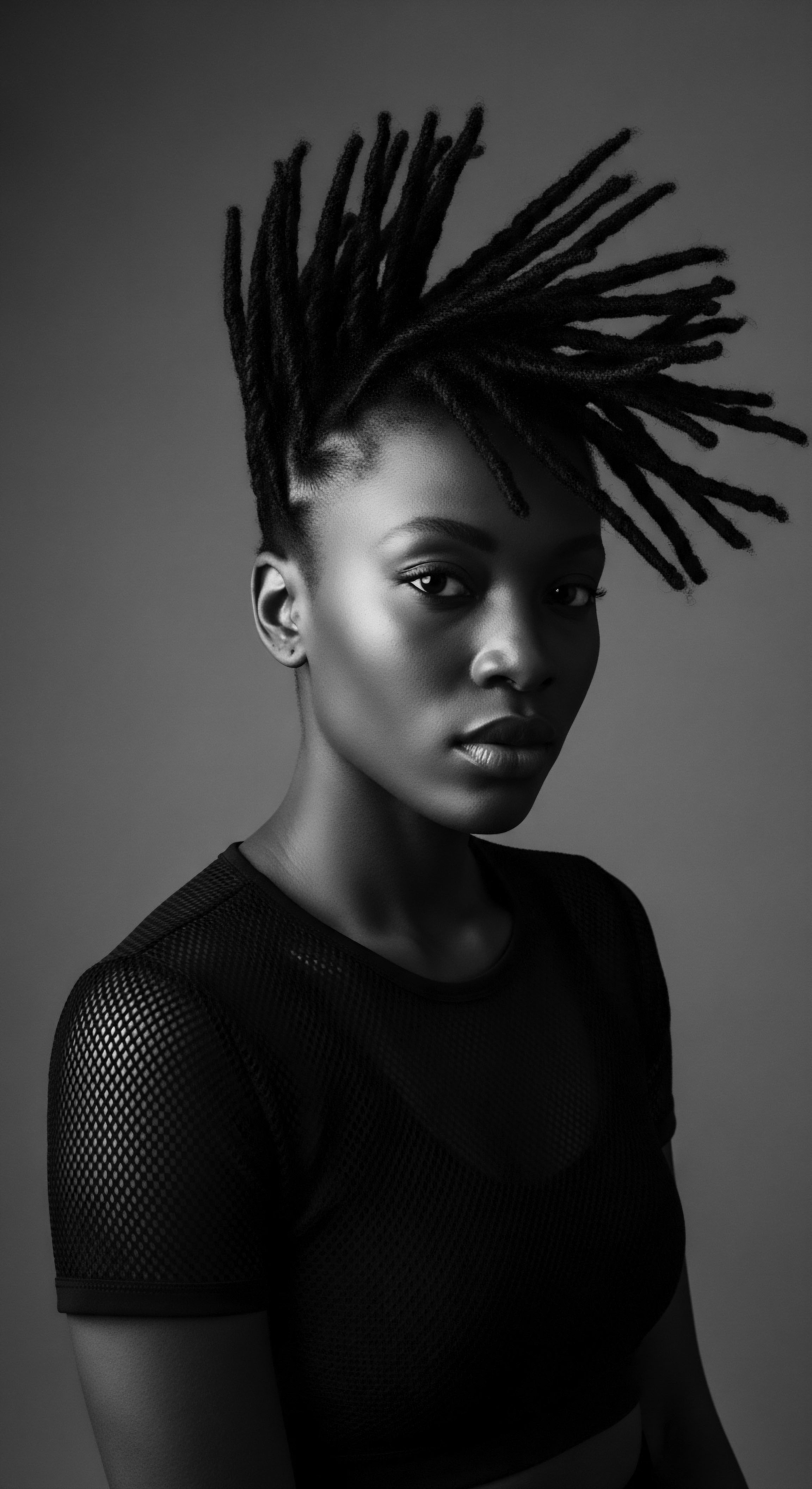
References
- Bundles, A. (2001). On Her Own Ground ❉ The Life and Times of Madam C.J. Walker. Scribner.
- Thirteen Lune. (n.d.). Discovering the Cultural Heritage of Shea Butter. Retrieved from (as plain text reference as per instruction, not URL).
- African Beauty Secrets. (n.d.). Cocoa and Shea Butters ❉ African Beauty Secret for Hair Care and Glowing Skin. Retrieved from (as plain text reference as per instruction, not URL).
- Adetula, O. A. et al. (2025). Historical Perspectives on Hair Care and Common Styling Practices in Black Women. Retrieved from (as plain text reference as per instruction, not URL).
- Omez Beauty Products. (n.d.). Discover the Power of Shea Butter ❉ The African Treasure for Your Hair and Skin. Retrieved from (as plain text reference as per instruction, not URL).
- Safo Hair. (2024). The Evolution of Black Hair Products ❉ A Journey from Homemade Remedies. Retrieved from (as plain text reference as per instruction, not URL).
- Nature in Bottle. (n.d.). Kalahari Melon Seed Oil Organic – Citrullus Lanatus. Retrieved from (as plain text reference as per instruction, not URL).
- Oxford Research Encyclopedia of African History. (2023). Women in Beauty Cultures and Aesthetic Rituals in Africa. Retrieved from (as plain text reference as per instruction, not URL).
- Ciafe. (2023). Shea Butter – Explainer. Retrieved from (as plain text reference as per instruction, not URL).
- Never the Less Inc. (n.d.). History of Black Hair Care. Retrieved from (as plain text reference as per instruction, not URL).
- Refinery29. (2021). The Evolution Of The Natural Hair Movement. Retrieved from (as plain text reference as per instruction, not URL).
- Twyg. (2021). Indigenous plants make up the growing organic beauty industry. Retrieved from (as plain text reference as per instruction, not URL).
- Livara Natural Organics. (2023). Black History Month ❉ The Rich History of Our African Hair. Retrieved from (as plain text reference as per instruction, not URL).
- Amazon. (n.d.). Brzeaf Chebe Hair Butter, 8.8 Oz – Repairs Fragile Hair, Promotes Growth & Strengthening, Natural Ingredients, For All Hair Types, Unisex, Adult Department, General Public. Retrieved from (as plain text reference as per instruction, not URL).
- Colomas, J. (2023). Unlock Ancient Hair Care Secrets ❉ Discover Global Rituals for Lustrous Locks. Retrieved from (as plain text reference as per instruction, not URL).
- Library of Congress. (n.d.). Heavy is the Head ❉ Evolution of African Hair in America from the 17th c. to the 20th c. Retrieved from (as plain text reference as per instruction, not URL).
